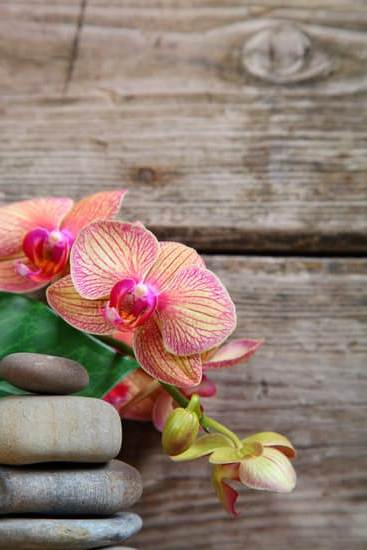Are you interested in learning how to match aromatherapy oils for your wellness needs? Aromatherapy oils have been used for centuries to promote physical, emotional, and mental well-being. In this article, we will explore the different types of aromatherapy oils, how to identify your specific aromatherapy needs and goals, understanding scent combinations and properties, tips for mixing and blending oils, creating your own blends, and using oils for various wellness practices.
Aromatherapy oils are concentrated plant extracts that capture the essence and fragrance of plants. These natural oils have been known to provide a range of benefits, including stress relief, relaxation, improved sleep, enhanced mood, and even alleviating physical discomfort. With a deeper understanding of aromatherapy oils and their benefits, individuals can effectively harness their therapeutic properties for a holistic approach to well-being.
To begin our exploration into the world of aromatherapy oils, it is important to understand the different types available and how each oil can be used to address various wellness concerns. Whether you are seeking relief from anxiety, looking to improve focus and concentration, or simply wanting to create a calming atmosphere at home, there is an aromatherapy oil suited for your specific needs.
By delving into the profiles and properties of these essential oils, you can gain insight into which ones align with your wellness objectives.
Understanding the Different Types of Aromatherapy Oils
Essential Oils
When it comes to understanding the different types of aromatherapy oils, it is important to start with essential oils. These oils are highly concentrated extracts from plants and are known for their therapeutic properties. Some popular essential oils include lavender, tea tree, peppermint, and eucalyptus. Each essential oil has unique benefits and uses, so it is essential to familiarize yourself with these oils before attempting to create your own blends.
Carrier Oils
Another type of aromatherapy oil that is often used in conjunction with essential oils is carrier oils. These are vegetable oils that help dilute essential oils and make them safe for skin application. Common carrier oils include coconut oil, sweet almond oil, jojoba oil, and olive oil. Understanding the differences between carrier oils and their properties can greatly impact the effectiveness of your aromatherapy blends.
Absolutes and CO2 Extracts
In addition to essential oils and carrier oils, there are also absolutes and CO2 extracts that are used in aromatherapy. Absolutes are highly concentrated aromatic liquids obtained from plants through solvent extraction, while CO2 extracts use carbon dioxide to extract the aromatic compounds from plants. These types of aromatherapy oils have their own unique characteristics and benefits, making them valuable additions to your collection.
Understanding the different types of aromatherapy oils is crucial in knowing how to match them effectively for various wellness practices. By familiarizing yourself with essential oils, carrier oils, absolutes, and CO2 extracts, you can expand your knowledge of aromatherapy and enhance your ability to create personalized blends tailored to your specific needs.
Identifying Your Aromatherapy Needs and Goals
When it comes to using aromatherapy oils, it’s important to first identify your specific needs and goals. Whether you are looking to relax, improve focus and concentration, alleviate symptoms of certain ailments, or simply enjoy pleasant scents, understanding what you want to achieve will guide you in choosing the right essential oils.
Consider if you are looking for a mood boost, stress relief, or physical wellness support. This will help you narrow down the options and create a more personalized aromatherapy experience tailored to your unique needs.
To determine your aromatherapy needs and goals, take some time to reflect on what areas of your life could benefit from essential oil use. Are you frequently stressed and in need of relaxation? Do you have trouble sleeping and want to create a calming bedtime routine?
Or perhaps you’re looking for natural ways to boost your energy levels throughout the day. By assessing your needs and setting clear intentions, you can better understand which aromatherapy oils will be most beneficial for you.
Once you have identified your specific aromatherapy needs and goals, it becomes easier to select the right essential oils that align with those objectives. Knowing which scents and properties are best suited for your desired outcomes will ensure that you are able to create effective blends that cater to your individual needs.
The next step is exploring different types of aromatherapy oils that are known for providing the desired benefits, allowing you to make informed choices on which ones to incorporate into your aromatherapy routines.
| Aromatherapy Need/Goal | Corresponding Essential Oils |
|---|---|
| Relaxation | Lavender, Chamomile, Frankincense |
| Mood Boost | Bergamot, Ylang Ylang, Sweet Orange |
| Energy Boost | Peppermint, Rosemary, Eucalyptus |
Exploring Aromatherapy Oil Profiles and Properties
When exploring aromatherapy oil profiles and properties, it’s important to understand the different characteristics of each oil and how they can be beneficial for your well-being. Each essential oil has its own unique scent, therapeutic properties, and potential benefits. By understanding these profiles and properties, you can better match aromatherapy oils to your specific needs and goals.
Understanding Aromatherapy Oil Profiles
Aromatherapy oils can be categorized into different scent profiles such as floral, citrus, woody, herbal, and spicy. Each of these scent categories can evoke certain emotions and have specific therapeutic effects. For example, floral scents like lavender and rose are known for their calming and relaxing properties, while citrus oils like lemon and orange are uplifting and invigorating.
Exploring Aromatherapy Oil Properties
In addition to their scent profiles, aromatherapy oils also have specific therapeutic properties such as anti-inflammatory, antibacterial, sedative, or stimulant effects. For example, eucalyptus oil is known for its decongestant properties and is commonly used for respiratory support, while peppermint oil is often used for its cooling and analgesic effects.
By understanding the profiles and properties of different aromatherapy oils, you can effectively select the right oils to address specific wellness concerns or goals. Whether you’re looking to promote relaxation, boost energy levels, or alleviate aches and pains, knowing the profiles and properties of aromatherapy oils will guide you in creating personalized blends that cater to your individual needs.
Understanding Scent Combinations and Aromatherapy Benefits
One of the key aspects of using aromatherapy oils effectively is understanding how different scents can be combined to achieve specific benefits. Here are some tips on understanding scent combinations and their aromatherapy benefits:
1. Familiarize yourself with aroma families: Aroma families are groups of essential oils that share similar aromatic properties. Some common aroma families include floral, citrus, woody, herbal, and spicy. Understanding these aroma families can help you identify which scents complement each other and can be combined to create balanced blends.
2. Consider the therapeutic properties of each essential oil: Each essential oil has its own unique therapeutic properties, such as calming, uplifting, or soothing. When combining aromatherapy oils, it’s important to consider the therapeutic properties of each oil to create a blend that serves your specific needs and goals.
3. Experiment with blending ratios: Blending different aromatherapy oils in varying ratios can produce completely different scent profiles and therapeutic effects. For example, blending equal parts of lavender and bergamot essential oils may result in a calming and relaxing blend, while increasing the ratio of bergamot can create a more uplifting and energizing scent.
4. Keep detailed notes: As you experiment with different scent combinations, it’s helpful to keep detailed notes on the blends you create and the effects they have on your mood and well-being. This will guide you in creating personalized aromatherapy oil blends that are tailored to your individual preferences and needs.
By understanding scent combinations and their aromatherapy benefits, you’ll be able to create custom blends that cater to your specific wellness goals and preferences.
Tips for Mixing and Blending Aromatherapy Oils
Aromatherapy oils can be powerful tools for achieving physical, mental, and emotional wellness. One way to fully harness their benefits is by learning how to properly match and blend different oils. Understanding the properties of each oil and how they can work together is essential in creating effective aromatherapy blends.
To start, it’s important to identify your aromatherapy needs and goals. Whether you’re looking to uplift your mood, alleviate stress, or ease physical discomfort, knowing what you want to achieve will guide you in choosing the right oils. For example, if you’re seeking relaxation, lavender and chamomile are known for their calming effects.
Once you’ve identified your needs, it’s time to explore aromatherapy oil profiles and properties. This involves understanding the scent, therapeutic properties, and potential benefits of each oil. Some oils are known for their anti-inflammatory properties while others are prized for their uplifting effects. By familiarizing yourself with these characteristics, you’ll be able to make informed decisions when creating blends.
Finally, mixing and blending the oils requires careful consideration of scent combinations and aromatherapy benefits. It’s important to take into account the intensity of each oil’s aroma as well as how they complement each other. Additionally, understanding the potential therapeutic benefits that different combinations can provide will help ensure that your blends are both enjoyable and effective.
| Benefit | Example Oils |
|---|---|
| Calming | Lavender, Chamomile |
| Uplifting | Bergamot, Grapefruit |
| Pain Relief | Peppermint, Eucalyptus |
Creating Your Own Aromatherapy Oil Blends
Once you have a good understanding of the different types of aromatherapy oils, their properties, and the benefits they offer, you can start creating your own blends. The key to successfully mixing and blending aromatherapy oils lies in understanding the scent combinations and the desired aromatherapy benefits.
When creating your own aromatherapy oil blends, it’s important to consider the therapeutic properties of each oil. For example, if you’re looking for a calming blend, you might want to combine lavender, chamomile, and frankincense essential oils. On the other hand, if you’re seeking an energizing blend, combining peppermint, rosemary, and citrus essential oils can be more effective.
Another important factor to consider when creating your own aromatherapy oil blends is the aroma profile. Some oils have strong scent profiles that may overpower others if not used in the right proportions. It’s crucial to experiment with different ratios and take note of how each oil interacts with one another to create a balanced blend.
As you begin experimenting with creating your own aromatherapy oil blends, keep in mind that it’s a personal journey. What works for one person may not work for another. Take your time to explore different combinations and find what resonates with your needs and goals. By understanding how to match aromatherapy oils based on their properties and benefits, you’ll be able to create custom blends that cater specifically to your wellness needs.
Using Aromatherapy Oils for Different Wellness Practices
Aromatherapy oils can be a powerful tool for promoting wellness and balancing the mind, body, and spirit. There are numerous ways to incorporate aromatherapy oils into your wellness routine, each with its own unique benefits. Whether you’re looking to relax, improve focus, or alleviate discomfort, there are various methods for using aromatherapy oils to support your overall well-being.
One popular way to use aromatherapy oils for wellness practices is through massage therapy. Essential oils like lavender, chamomile, and eucalyptus can be blended with carrier oils like coconut or sweet almond oil for a soothing and aromatic massage experience. These blends can help reduce muscle tension, promote relaxation, and provide relief from everyday stress.
Another common wellness practice that incorporates aromatherapy oils is meditation and mindfulness exercises. Certain essential oils such as frankincense, sandalwood, and cedarwood are known for their grounding and calming properties, making them perfect for enhancing the meditation experience. By diffusing these oils or applying them topically before meditation sessions, individuals can create a peaceful and conducive environment for introspection and relaxation.
Additionally, aromatherapy oils can also be used in bath rituals to promote self-care and relaxation. Adding a few drops of essential oils like geranium, ylang-ylang, or bergamot to a warm bath can enhance the bathing experience by creating a calming atmosphere and providing various therapeutic benefits. This simple practice can help alleviate stress and tension while promoting mental clarity and emotional balance.
Overall, understanding how to match aromatherapy oils with different wellness practices allows individuals to personalize their self-care routines based on their specific needs and preferences. By exploring various methods of incorporating essential oils into their daily wellness regimen, individuals can tap into the transformative power of aromatherapy for enhanced physical, emotional, and mental well-being.
Safety and Precautions When Using Aromatherapy Oils
Aromatherapy oils have many benefits for physical, mental, and emotional well-being. They can be used to promote relaxation, improve mood, relieve stress, and even alleviate certain physical symptoms like headaches or muscle pain. However, it is important to use these oils safely and with caution to avoid any adverse reactions or side effects.
When using aromatherapy oils, it is crucial to understand the potential risks and take the necessary precautions. Here are some safety tips to keep in mind:
- Always dilute essential oils before applying them directly to the skin. Carrier oils such as coconut oil, jojoba oil, or almond oil can be used for this purpose.
- Do a patch test before using a new essential oil to check for any allergic reactions or sensitivity.
- Avoid contact with sensitive areas such as the eyes, ears, or mucous membranes.
- Keep essential oils out of reach of children and pets.
- Store essential oils in a cool, dark place away from direct sunlight and heat to prevent degradation.
It is also important to be aware of any contraindications or potential interactions with medications when using aromatherapy oils. Always consult with a healthcare professional if you have any underlying health conditions or are taking medication before incorporating aromatherapy into your wellness routine.
In addition to these safety measures, it is important to educate yourself about each individual essential oil and its specific properties and benefits. Understanding how each oil interacts with the body can help you make informed and safe choices when creating your own blends or using them for different wellness practices.
Overall, by practicing caution and arming yourself with knowledge about aromatherapy oils, you can enjoy their benefits while minimizing any potential risks or adverse effects.
Conclusion and Next Steps for Exploring Aromatherapy Oils
In conclusion, aromatherapy oils provide a natural and effective way to improve wellness and overall well-being. Understanding the different types of aromatherapy oils, their properties, and benefits is essential for creating personalized blends that cater to your specific needs and goals. By exploring scent combinations and learning how to mix and blend aromatherapy oils, you can create customized blends that offer a range of therapeutic benefits.
Creating your own aromatherapy oil blends allows for flexibility and experimentation, giving you the opportunity to tailor your blends to address different wellness practices such as stress relief, relaxation, or mental clarity. However, it’s important to keep safety and precautions in mind when using aromatherapy oils. Always dilute essential oils properly and perform a patch test before using them topically. Additionally, be mindful of any contraindications or sensitivities before incorporating aromatherapy oils into your wellness routine.
As you continue to explore the world of aromatherapy oils, consider seeking guidance from certified aromatherapists or holistic health practitioners who can provide personalized recommendations based on your individual needs. With the right knowledge and resources, you can harness the power of aromatherapy oils to enhance your physical, emotional, and mental well-being.
Remember that the journey of discovering how to match aromatherapy oils is an ongoing process, so stay open to new knowledge and experiences as you explore the endless possibilities of aromatherapy.

Are you looking for a natural way to improve your health and wellbeing?
If so, aromatherapy may be the answer for you.





